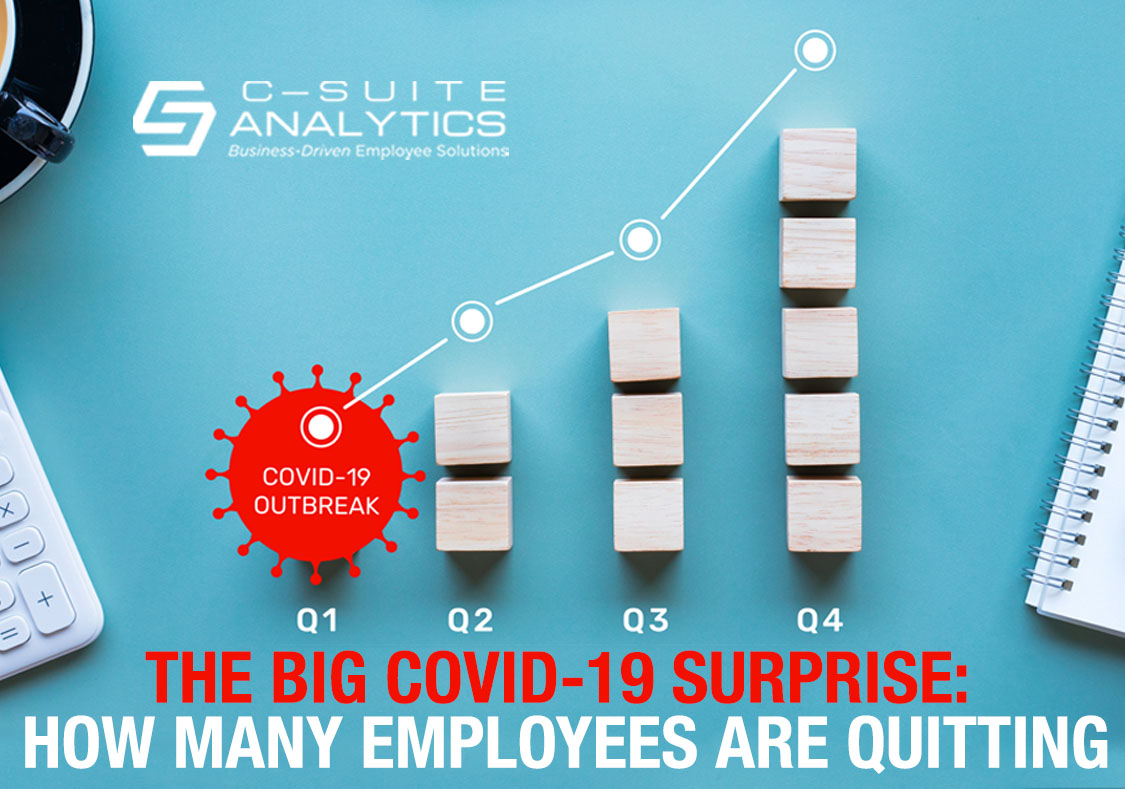Employee engagement hasn’t improved in 20 years—and Gallup says managers are the reason. Learn why corporate programs fail and what actually moves the needle.
The Big COVID-19 Surprise: How Many Employees Are Quitting Their Jobs?

Trained as an economist, Bill Conerly writes a column for Forbes which I always look out for, in part because he once wrote an article about my work. His most recent column is titled, “Is It Time To Quit Your Job?” Strange at first, I thought, given our hard times due to COVID-19 and our struggling economy.
But Bill went on to say that our disruptive economy discriminates, and that unemployment for the finance sector is just 3.8%, and also just 3.3% for people in professional and related occupations. These are the types of workers who read Forbes. And their managers read Forbes, too.
Bill’s key underlying point is to never take retention for granted. That this is a time when not only top performers can go anywhere, but all employees are taking stock of their own happiness, their families’ health and stability, and asking what matters to them most. Connecting, communicating, and applying Stay Interviews has never mattered more.
You can see Bill’s article here:
https://www.forbes.com/sites/billconerly/2020/11/21/is-it-time-to-quit-your-job/?sh=65cb1bb16a1f
Bill’s article was published on the same day the Wall Street Journal reported a trend among Silicon Valley technology workers, that working from home had sprung their interests to consider working anywhere…and living anywhere. Reports included quotes from small tech company CEOs in the Midwest who noticed a spike in applications from California that they had never seen before.
All of this disruptive thinking stimulated my geek data-seeking side, so I dug deeply into quits data from the Bureau of Labor Statistics. My premise has been that most people are holding onto their jobs for fear of losing them and not being able to find another, so therefore comparisons of how many of us are voluntarily quitting our jobs year-over-year would show a sharp decline. And the data proves that was true…for a while.
Let’s take a peek at how much actual job quits have declined in 2020 versus their same month in 2019 as COVID-19 unfolded into our consciousness. Keep in mind that this data reflects actual voluntary quits versus layoffs, firings, or any other separation that is driven by organizations.
The bottom line is voluntary quits in 2020 came to a halt early during the pandemic but then picked up again as time went on. Let’s take a closer look month to month:
January & February: Virtually no change in January, down just 1% in February. We were clueless then regarding our upcoming pandemic, even though our government later announced that our economy was already in recession in February.
March: Quits were down 21% versus a year ago as the COVID-19 wake-up call was beginning to be heard.
April: Quits were down 49% as our worlds were suddenly on hold.
May: The gap in year-over-year quits fell to 41%, indicating a few more of us were walking away from our jobs.
June, July, & August: Many more of us were now leaving our jobs as the gap tightened significantly; the shrinking gaps of 25%/18%/22% respectively meant for example that in August, a full 78% of those who quit in that month in 2019 had also quit in 2020.
September: This is the last month for which data is currently available, and in that month the gap shrunk to just 12%. So, in September of 2020, 88% of those who voluntarily quit in 2019 also quit in 2020.
So, the trend is clear. Our employees are moving on from the pandemic and are seeking other opportunities. And chances are they are their companies’ best producers, the ones who have more ambition and can more easily find new jobs…and choose from among the jobs that are available.
This data trend also matches our C-Suite Analytics’ business. When the pandemic grounded our economy to a halt, fewer organizations were asking us to help them cut turnover. Now, though, we get daily inquiries about doing so, particularly in healthcare, food processing, manufacturing, call centers, and other organizations with high concentrations of professional workers.
Let’s close by echoing the key point that top performers are always vulnerable to leave, and their job searches are conducted silently, and usually on your company-provided computers. The time to communicate, listen, and conduct Stay Interviews is now.
Please email your comments to me at DFinnegan@C-SuiteAnalytics.com. You are also welcome to forward this blog to anyone you believe would find it helpful.



